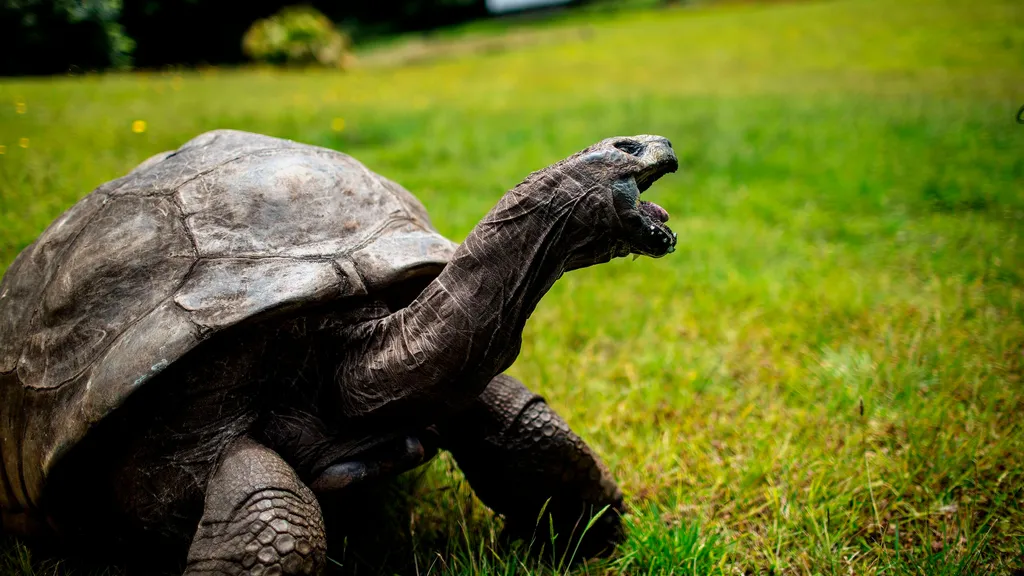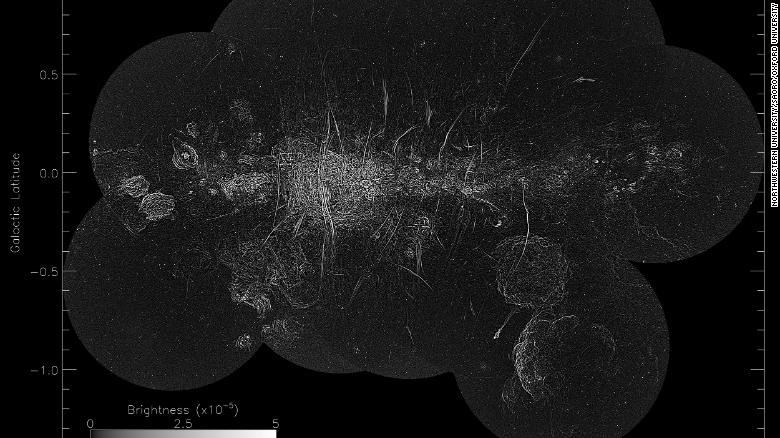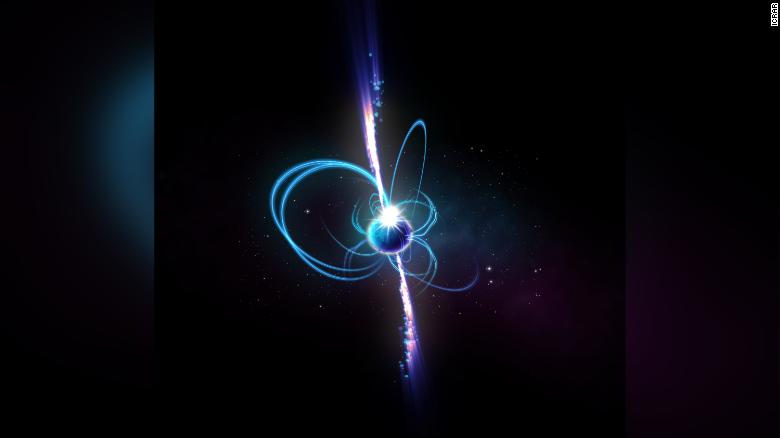We live in such fragility for constancy, yet life toughs it out, over and over. Human kind may successfully wipe ourselves and a good number of species from the face of the earth, and perhaps something new will arise from the remnants. Picture them a billion years from now: thinking amphibians hammering at rocks, trying to figure out what happened... sitting zazen, wearing little rakusus made from old bits of kelp... though the number of times this cycle can go on is limited, as our own sun is doomed to die in another 4 billion years or so.
Gassho,
然芸 Nengei
Sat today. LAH.
The Zen of Technology & Scientific Discovery! (& Robots)
Collapse
X
-
A fascinating story. Like the earth, our Zazen practice can also grow from the "down" times and the times of loss ... which lead to all that then comes ...
Gassho, JMeet the man who can explain the first 3 billion years of life on our planet
The Royal Swedish Academy of Sciences on Monday will award [paleontologist Andrew Knoll] the prestigious Crafoord Prize, considered a complement -- and for some winners, a precursor to -- a Nobel prize.
... The honor is for his work on illuminating the first 3 billion years of Earth's history, determining the ages of layers of bedrock, discovering tiny organisms from the depths of time that are the infinitesimal ancestors of every one of us and explaining the world's worst mass extinction."He really tries to integrate all the available data -- the geological, the biological and the chemical and puts things in perspective. ... It's not necessarily the glamorous side of paleontology -- Knoll mostly finds and examines microfossils only visible with a microscope, not towering skeletons of extinct giants that take center stage in museum atriums. But how he has pieced together the story of Earth's birth and life's earliest history has revolutionized the field.
... Our familiar world of complex animals began to take shape beginning about 540 million years ago, in what's known as the Cambrian explosion. But Knoll's discovery of microscopic fossils of bacteria-like organisms, single-celled protozoans and algae that date back as far as 3 billion years -- and the environment they emerged in -- have shown that the evolutionary path to our modern animal and plant life began much earlier. ... Knoll also first described what is sometimes known as the "boring billion" -- a period in Earth's history around 1.8 billion to 800 million years ago when nothing much appeared to happen biologically or climatically. Nonetheless, he said it was a crucial period that paved the way for life as we know it. "Our work and that of others, demonstrates that this is when the eukaryotic cell came of age -- all of the molecular and cell biology that eventually made animals possible, was hammered out during this boring billion," Knoll said.
... Knoll also came up with the most credible explanation for Earth's third and biggest mass extinction, when more than 90% of species in the ocean disappeared and 70% of land animals died out. The event ultimately paved the way for the rise of the dinosaurs.
Known as the "Great Dying," it marked the end of the Permian period 252 million years ago, and its cause had long been debated. ... The biological catastrophe unleashed at this juncture in time was chilling, Knoll said. At rocks exposed on a mountainside in China called Meishan, where Knoll has worked, the limestone rocks bristle with fossilized marine life, and then after one point no wider than a knife edge, they all disappear, he said. Puzzling over the phenomenon one night while he was awake caring for his son, Knoll came up with the idea that the apparent disappearance of life could have been due to a rapid rise in CO2. To understand what might have happened, Knoll and his colleagues dove into fossil records and divided the marine fauna that lived at the end of the Permian into two groups: vulnerable and tolerant to CO2. For example, animals with gills for gas exchange should be more tolerant, while corals -- which have carbonate skeletons -- didn't respond that well. The group with the traits more tolerant of CO2, such as clams and snails, largely survived the mass extinction. ... The cause of the rise in CO2 was ultimately determined to be a massive area of volcanic activity in what's now Russia known as the Siberian Traps.
...
https://us.cnn.com/2022/01/30/americ...scn/index.html
STLahLeave a comment:
-
-
I very much appreciate the beauty of things like your tabletop. Those marks are left by a family, being. Thank you for that.
Gassho,
然芸 Nengei
Sat today. LAH.Leave a comment:
-
Going slow, nothing to attain. The last comment is very lovely ... persistence in the face of change ...

190-year-old Jonathan is the oldest tortoise ever
Jonathan was already the oldest living land animal.
A 190-year-old tortoise named Jonathan has become the oldest tortoise ever, adding to his list of age-defying accolades.
Jonathan is estimated to have been born in 1832, which means he turned, or turns, 190 years old in 2022, Guinness World Records announced on Jan. 12. To put that into context, Jonathan was born before Queen Victoria ascended the British throne in 1837.
The elderly Seychelles giant tortoise (Aldabrachelys gigantea hololissa) was already the Guinness World Record holder for the oldest living land animal, but now he is officially the oldest turtle or tortoise ever recorded. He beat previous record-holder Tu'i Malila, a radiated tortoise (Astrochelys radiata) that lived to be at least 188 years old before dying in 1965.
In his twilight years, Jonathan is blind and can't smell but still grazes on the grounds of the governor of St. Helena's residence where he lives with fellow giant tortoises David, Emma and Fred. ... "In spite of his age, Jonathan still has good libido and is seen frequently to mate with Emma and sometimes Fred — animals are often not particularly gender-sensitive!" Hollins told Guinness World Records.
... Scientists don't yet understand all of the processes that allow tortoises like Jonathan to live for so long. Giant tortoises quickly kill off damaged cells in a process called apoptosis, which may help protect them against damage to cells that normally deteriorate as we age, Live Science previously reported. ... Jonathan's longevity may be unmatched on land, but there are longer living animals in water. For example, Greenland sharks (Somniosus microcephalus) have an estimated maximum life span of at least 272 years, and Hydra, a group of small jellyfish-like invertebrates, continually regenerate their cells and don't seem to age at all.
...
Jonathan lives on St. Helena, an island in the South Atlantic Ocean. "He is a local icon, symbolic of persistence in the face of change," Joe Hollins, Jonathan's veterinarian, told Guinness World Records.

Gassho, J
STLahLeave a comment:
-
Those magnetic strands are how the aliens beam their consciousness from one planet to another
Gassho,
Gareth
Sat today, LahLeave a comment:
-
Leave a comment:
-
The greatest art is in the cosmos. Magical.
Gassho,
然芸 Nengei
Sat today. LAH.Leave a comment:
-
Some great discoveries, yet also great mysteries.
Perhaps they are nothing in particular, no particular function, just scratches on the universal table top ... frayed strands at the bottom of the cosmos' old curtains ...
Hundreds of mysterious strands found at the heart of the Milky Way
The center of our Milky Way galaxy is home to a multitude of intriguing features -- including nearly a thousand mysterious magnetic strands, according to a new telescope image.
The pairs and clusters of strands stretch for nearly 150 light-years in length and are equally spaced. The bizarre structures are a few million years old and vary in appearance. Some of them resemble harp strings, waterfalls or even the rings around Saturn. But the true nature of the filaments remains elusive.
Farhad Yusef-Zadeh, a professor of physics and astronomy at Northwestern University, first discovered the strands 35 years ago via radio waves. He determined that the strands were made of cosmic ray electrons that were moving their magnetic fields at near the speed of light. The origin of these strands, however, has remained a mystery.
Now, astronomers were able to find 10 times more strands than Yusef-Zadeh's previous discovery, using the South African Radio Astronomy Observatory MeerKAT telescope.
... The amount of radiation varied from other energetic cosmic events, like supernova remnants, the team's analysis of the strands showed. The scientists think the strands are more likely related to past activity caused by the supermassive black hole at the center of the Milky Way rather than the explosions of stars.
... As the team works to identify each strand, they are still trying to figure out the orderly, equal distance between clusters of strands, the cause of the particle acceleration. or if the strands move over time. "Every time we answer one question, multiple other questions arise," Yusef-Zadeh said. "How do you accelerate electrons at close to the speed of light? One idea is there are some sources at the end of these filaments that are accelerating these particles."
The team also determined that magnetic fields are stronger along the strands.
... Multiple studies about the strands will be published in the future, and scientists hope to uncover how they fit in among the tangle of objects near the center of the Milky Way. "We're hoping to get to the bottom of it, but more observations and theoretical analyses are needed," he said. "A full understanding of complex objects takes time."
https://us.cnn.com/2022/01/26/world/...scn/index.html
and ... maybe it is the cosmic snooze alarm? ...
Unknown space object beaming out radio signals every 18 minutes remains a mystery
While mapping radio waves across the universe, astronomers happened upon a celestial object releasing giant bursts of energy -- and it's unlike anything they've ever seen before.
The spinning space object, spotted in March 2018, beamed out radiation three times per hour. In those moments, it became the brightest source of radio waves viewable from Earth, acting like a celestial lighthouse.
Astronomers think it might be a remnant of a collapsed star, either a dense neutron star or a dead white dwarf star, with a strong magnetic field -- or it could be something else entirely.
... "That was completely unexpected. It was kind of spooky for an astronomer because there's nothing known in the sky that does that. And it's really quite close to us -- about 4,000 light-years away. It's in our galactic backyard." ... This new, incredibly bright object, however, only turned on for about a minute every 18 minutes. The researchers said their observations might match up with the definition of an ultra-long period magnetar. Magnetars usually flare by the second, but this object takes longer. "It's a type of slowly spinning neutron star that has been predicted to exist theoretically," Hurley-Walker said. "But nobody expected to directly detect one like this because we didn't expect them to be so bright. Somehow it's converting magnetic energy to radio waves much more effectively than anything we've seen before."
The researchers will continue to monitor the object to see whether it turns back on, and in the meantime, they are searching for evidence of other similar objects.https://us.cnn.com/2022/01/26/world/...scn/index.html
This is an artist's impression of what the object might look like if it's a magnetar, or an incredibly magnetic neutron star.
Gassho, J
STLahLeave a comment:
-
But intelligent AI artificial limbs will likely remaining the better solution for humans ...
Question, what can never be lost even as the 2nd Ancestor loses an arm?Frogs can regrow amputated limbs after being treated with mix of drugs, new research finds
Some unusual creatures have an innate ability to regrow a limb: salamanders, starfish, crabs, lizards and newts.
Such extraordinary powers elude most animals, including humans, although scientists have long sought to understand and replicate them in a quest to regenerate limbs for millions of patient amputees, including diabetics and victims of trauma.
Now, researchers in the United States said Wednesday they were able to trigger the regrowth of an amputated leg in a type of African clawed frog (Xenopus laevis), in what they described as a "step closer to the goal of regenerative medicine."
The technique used by the team of scientists, based at Harvard University's Wyss Institute and Tufts University, involved applying a mix of five drugs to the test frogs' spike-like stump, sealed in with a small silicone dome. The cocktail was only applied for 24 hours, but after 18 months, the limb was almost fully functional. The frogs, which live in water, were able to swim and respond to touch. They also grew several toes but not the webbing between them.
..."An immediate translation of this strategy to humans is unlikely because a regenerative spike does not occur in humans as it does in Xenopus frogs. Yet, this work is exciting because it shows that endogenous regenerative processes can be enhanced by a short application of a drug cocktail," Monaghan said.
... Ashley Seifert, an associate professor of biology at the University of Kentucky who studies animal regeneration but was not involved in the research, said that advancements being made with prosthetics offered more hope than limb regeneration for people with amputated limbs lost through trauma or illness like diabetes.
"Will we one day be able to regenerate a human digit or even a limb? Probably, but how long we need to wait is impossible to predict," Seifert said.
"One step in that direction will be when regenerative biology fully embraces new regenerative models, particularly certain species of mammals. This and comparative studies will help us understand how and why regeneration fails in some contexts and succeeds in others."
https://us.cnn.com/2022/01/26/world/...scn/index.html
Gassho, J
STLahLeave a comment:
-
Particle X ... from the BEGINNING OF TIME! ...
Gassho, J'X particle' from the dawn of time detected inside the Large Hadron Collider
Physicists at the world's largest atom smasher have detected a mysterious, primordial particle from the dawn of time.
About 100 of the short-lived "X" particles — so named because of their unknown structures — were spotted for the first time amid trillions of other particles inside the Large Hadron Collider (LHC), the world's largest particle accelerator, located near Geneva at CERN (the European Organization for Nuclear Research).
These X particles, which likely existed in the tiniest fractions of a second after the Big Bang, were detected inside a roiling broth of elementary particles called a quark-gluon plasma, formed in the LHC by smashing together lead ions. By studying the primordial X particles in more detail, scientists hope to build the most accurate picture yet of the origins of the universe. They published their findings Jan. 19 in the journal Physical Review Letters.
... Scientists trace the origins of X particles to just a few millionths of a second after the Big Bang, back when the universe was a superheated trillion-degree plasma soup teeming with quarks and gluons — elementary particles that soon cooled and combined into the more stable protons and neutrons we know today.
Just before this rapid cooling, a tiny fraction of the gluons and the quarks collided, sticking together to form very short-lived X particles. The researchers don't know how elementary particles configure themselves to form the X particle's structure. But if the scientists can figure that out, they will have a much better understanding of the types of particles that were abundant during the universe's earliest moments.
"Theoretically speaking, there are so many quarks and gluons in the plasma that the production of X particles should be enhanced," Lee said. "But people thought it would be too difficult to search for them, because there are so many other particles produced in this quark soup." But the researchers did have a handy clue to work with. Although particle physicists don't know the X particle's structure, they do know that it should have a very distinct decay pattern, because the "daughter" particles it makes should zip off across a very different spread of angles than those produced by other particles. This knowledge enabled the researchers to produce an algorithm that picked out the telltale signs of dozens of X particles.
https://www.livescience.com/x-partic...ted-inside-lhc
STLAHLeave a comment:
-
Webb made it! A million mile trek ...
More here: https://us.cnn.com/2022/01/24/world/...scn/index.htmlNASA's James Webb Space Telescope reaches new home a million miles from Earth
After a nail-biting 29 days of travel and ultra-precise deployments, the James Webb Space Telescope fired its thrusters one more time Monday to reach its final parking spot a million miles from Earth.
"Webb, welcome home," NASA Administrator Bill Nelson said in a statement after a five-minute burn added just 3.6 mph to the telescope's speed. "Congratulations to the team for all of their hard work ensuring Webb’s safe arrival at L2 today."
L2 refers to a kind of stable orbit known as a Lagrange point. Technically, Webb is now orbiting the sun and is staying in line with Earth about a million miles away.
"We’re one step closer to uncovering the mysteries of the universe. And I can’t wait to see Webb’s first new views of the universe this summer," Nelson said.
... Every single thing had to work perfectly in order to launch, deploy mirror segments, and reach its final position. ... Mission partners NASA, the European Space Agency, and Canadian Space Agency described the process as "29 days on the edge." Officials before launch said there were potentially 344 points of failure during that period.
Moving forward, engineers will spend about three months aligning Webb's 18 gold-coated hexagonal mirrors to the final configuration.
Gassho, J
STLahLeave a comment:
-
More black hole news ... they doth not only taketh, they doth giveth too ...
Gassho, JA black hole fueling star birth has scientists doing a double-take
Black holes are best known for shredding stars, devouring light and acting like massive garbage disposals in space.
In a twist, astronomers using the Hubble Space Telescope have discovered that these energetic celestial objects have a nurturing side, too.
Hubble's observation of a dwarf starburst galaxy, called Henize 2-10, revealed a gaseous umbilical cord stretching from a black hole at the center of the galaxy to a stellar nursery where stars are born.
A dwarf starburst galaxy is a small galaxy with an intense amount of star formation.
Star birth requires a dense cloud of gas and dust. The stream of gas provided by the black hole actually triggered a fireworks show of star birth as it interacted with the cloud, which led to a cluster of forming stars.
... It's a rare case of a black hole helping stars to form, rather than tearing them apart. In large galaxies, black holes spew out superheated jets of material that nearly reach the speed of light. Any gas clouds unfortunate enough to be in the way of these jets would become so hot, they wouldn't be able to cool down enough to form stars.
https://us.cnn.com/2022/01/21/world/...scn/index.html
STLahLeave a comment:
-
Hole-y cow ... And yet, it is all still a Wholeness ...
Gassho, J40 quintillion stellar-mass black holes are lurking in the universe, new study finds
"Small" black holes are estimated to make up 1% of the universe’s matter.
... Using a new method, outlined Jan. 12 in The Astrophysical Journal, a team of astrophysicists has produced a fresh estimate for the number of stellar-mass black holes — those with masses 5 to 10 times that of the sun — in the universe. And it’s astonishing: 40,000,000,000,000,000,000, or 40 quintillion, stellar-mass black holes populate the observable universe, making up approximately 1% of all normal matter, according to the new estimate.
So how did the scientists arrive at that number? By tracking the evolution of stars in our universe they estimated how often the stars — either on their own, or paired into binary systems — would transform into black holes, said first author Alex Sicilia, an astrophysicist at the International School of Advanced Studies (SISSA) in Trieste, Italy.
"This is one of the first, and one of the most robust, ab initio [ground up] computation[s] of the stellar black hole mass function across cosmic history," Sicilia said in a statement.
,,, Astrophysicists hope to use the new estimate to investigate some perplexing questions that arise from observations of the very early universe — for instance, how the early universe became so quickly populated by supermassive black holes — often with masses millions, or even billions, of times greater than the stellar-mass holes the researchers examined in this study — so soon after the Big Bang.
Because these gigantic black holes came from the merging of smaller, stellar-mass black holes — or black hole 'seeds' — the researchers hope that a better understanding of how small black holes formed in the early universe could help them to unearth the origins of their supermassive cousins.
https://www.livescience.com/research...ny-black-holes
STLahLeave a comment:
-
Oh, we are spared again! Otherwise, a Brontosaur would be typing these words ...
Reminds me of this movie I watched this week which, while not the greatest movie ever, was just so true ...A massive asteroid will zip past Earth next week. Here's how to spot it.
The space rock is more than twice as massive as the Empire State Building.
The stony asteroid, known as (7482) 1994 PC1, will pass at its closest on Jan. 18 at 4:51 p.m. EST (2151 GMT), traveling at 43,754 mph (70,415 km/h) and hurtling past Earth at a distance of 0.01324 astronomical units — 1.2 million miles ( nearly 2 million kilometers), according to NASA JPL-Caltech's Solar System Dynamics (SSD).
https://www.livescience.com/asteroid...s-january-2022
Gassho, J
STLahLeave a comment:
 Just scratches, left by a failure of the universe to use placemats.
Just scratches, left by a failure of the universe to use placemats. 



Leave a comment: